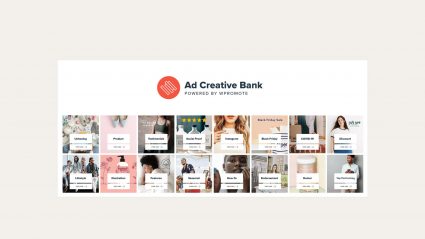In part one of this series, we stated our thesis around performance creative:
We believe that if your brand is not optimizing ads toward a primary action-based goal, constantly tweaking your message to increase conversion and scale spend profitably, then you might not be spending your time, budget and energy in the most effective way.
Now that we’ve covered the definition, impact, and value of performance creative, let’s continue our series by talking about quantity, quality, diversity, testing, and machine learning.
What are the key elements of successful performance creative?
First is quantity. Consistent creation enables greater agility. If you develop a schedule for creating assets that allow you to test and respond to changes in the advertising world quickly, you’ll be sure to achieve high performance. We recommend clients have a large pool of creative ready to go live at a moment’s notice. That way, the brand is always siphoning in new ads for testing. And when performance inevitably declines, you can quickly rotate in more to increase results. Ultimately, by having a treasure trove of performance creative to pull from, you can quickly see strategically which ads will convert the best, i.e., lifestyle versus product, static versus videos, and so on.
Second is quality. Better ads earn more engagement, and higher engagement is going to drive performance. Period. Here are some tips to keep in mind. First, make sure the quality of your ad is aligned with your product. Too much of a gap between aesthetics and functionality will destroy trust. Second, make sure all videos have music. Instagram Stories, for example, won’t grab attention with silence. Users have trained themselves to swipe and move on. Remember, in the feed, the videos start off muted, and so, if somebody does click and the audio doesn’t engage, neither will they. Because it’s not the result they wanted.
Third is diversity. With over sixty ecommerce clients in our current roster, we’ve discovered time and time again that greater diversity of creative means the ability to test more target segments, which allows us to optimize for growth. Our recommendation for brands just starting their marketing programs, or relaunching new product lines, is to own a variety of different asset types. Static, carousel, video, collection, slideshow, test them all. Now, you’re likely to find, as we have, that static, video, and carousels will perform the best. You could almost think of them as the primary colors of your performance marketing rainbow. Those three ad types are red, blue, and green, respectively. But based on the success of those three, you can branch out into subcategories, i.e., from video to gifs, slide shows, and other moving images.
What’s the best approach to testing performance creative?
With our direct to consumer clients, we naturally iterate towards what performs better. It can be tempting to keep the same type of ad across the board just because we like it, but we defer to the metrics. Instead of looking at aggregation results, we look at individual ad sets. That way, we can pause poor performers, figure out what resonates best with our audience, and choose what is in the best interest of the business for today.
But tomorrow that might change, and next month it might change again. One week static ads are killing it, the next day longer form text performs better than shorter copy, then the next week, the opposite is true. This variation can be deeply frustrating, but that’s why our value of grit is so helpful. We know it’s not about avoiding failure, it’s about recovering from it quickly, cheaply, and intelligently.
What are some dangers of not approaching creative with a performance mindset?
If your brand hasn’t produced any truly new creative assets in the past six months, that is likely to be the most significant factor in declining brand performance. Of the many ways that impacts performance, it tends to translate most concretely right now in clickthrough rate. Stale creative can weigh it down. And when clickthrough rate is lower than where it used to be, that effectively tacks on cost to each and every click.
Ultimately, new creative is key to success in the future, particularly from a cost standpoint. What ecommerce brands often fail to realize is, the sooner they get new creative assets into the account, the better. The platforms are going in the direction of automation. The conversation is coming up a lot, and creative is only going to be more and more of a differentiator. Trying to feed it as much engaging, differentiating creative as possible is the number one way to keep costs down and keep conversions up. In the digital marketing future, the ad model will be more and more focused on much machine learning. Which means one thing you have control over is feeding that machine top creative.
To what degree is machine learning impacting performance creative?
As performance marketing technology becomes more and more automated, human intervention will be critical on the ad creative side. With the advent of automation and stronger reliance on algorithms in platforms, the strongest lever for humans will remain creative. The automated algorithm certainly thinks more logical than a human, but we can still think creatively in a way that the computer can’t. Yes, the algorithm can optimize on micro levers we can’t begin to notice or have access to, but it’s not as good at experimenting. It can’t make judgment calls like trained human marketers can.
Perfect example. The computer may iterate into the best performance creative too early. Say your first ad receives one click, and your second ad receives zero clicks. The computer might dump all the budget on that first one, which logically makes sense, but only because it didn’t have the patience to give those ads time to serve. Turns out, one extra click can negatively influence the decision to optimizing toward that ad.
Bottom line, if you’re selling to people, there’s got to be a human element to it. Certainly, lean towards the artificial intelligence, and allow it to do the things you can’t do, but assure it’s still a symbiotic relationship. All performance creative has one thing in common, which is that it evokes emotions, and we maintain the ability to do that as humans.







Responses